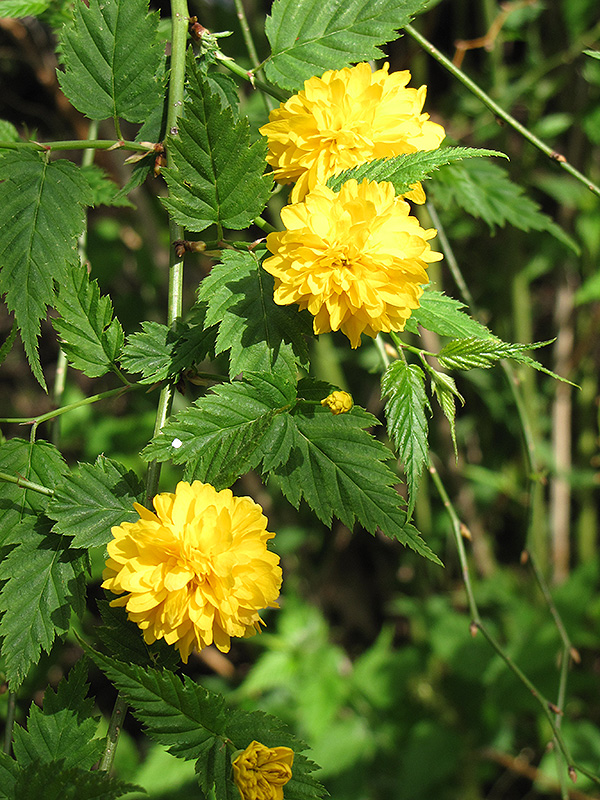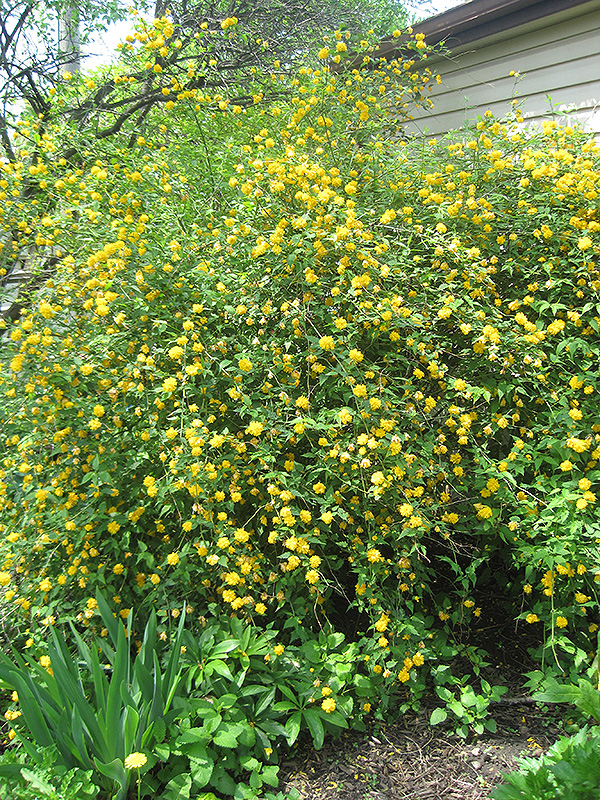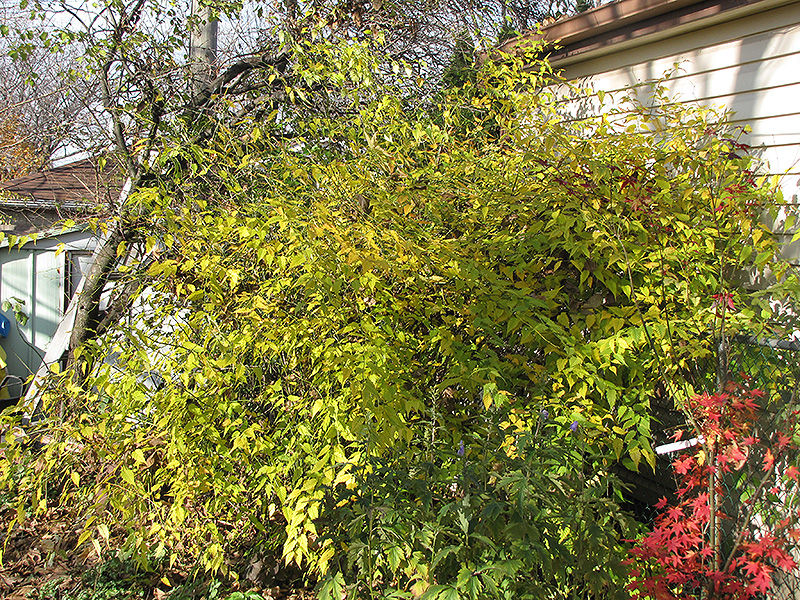VANDERMEER
PLANT LIBRARY
Find the perfect plant for your space by browsing through this extensive selection that we typically carry every year.
This library is for information purposes only.
Double Flowered Japanese Kerria
Kerria japonica 'Pleniflora'
Height: 7 feet
Spread: 6 feet
Sunlight:
![]()
![]()
![]()
Hardiness Zone: 5a
Description:
A colorful spring blooming shrub featuring fully double puffy golden flowers on upright thin, colorful stems and light green leaves; spreads by suckering to form a natural mass; use in groupings in partial shade in the garden, grows quite tall
Ornamental Features
Double Flowered Japanese Kerria features showy double yellow flowers along the branches from early to mid spring. It has light green deciduous foliage. The narrow leaves turn lemon yellow in fall. The smooth bark and lime green branches add an interesting dimension to the landscape.
Landscape Attributes
Double Flowered Japanese Kerria is a dense multi-stemmed deciduous shrub with an upright spreading habit of growth. It lends an extremely fine and delicate texture to the landscape composition which can make it a great accent feature on this basis alone.
This is a high maintenance shrub that will require regular care and upkeep, and should only be pruned after flowering to avoid removing any of the current season's flowers. Deer don't particularly care for this plant and will usually leave it alone in favor of tastier treats. Gardeners should be aware of the following characteristic(s) that may warrant special consideration;
- Suckering
Double Flowered Japanese Kerria is recommended for the following landscape applications;
- Mass Planting
- General Garden Use
Planting & Growing
Double Flowered Japanese Kerria will grow to be about 7 feet tall at maturity, with a spread of 6 feet. It tends to be a little leggy, with a typical clearance of 1 foot from the ground, and is suitable for planting under power lines. It grows at a medium rate, and under ideal conditions can be expected to live for 40 years or more.
This shrub performs well in both full sun and full shade. It does best in average to evenly moist conditions, but will not tolerate standing water. It is not particular as to soil type or pH. It is highly tolerant of urban pollution and will even thrive in inner city environments. This is a selected variety of a species not originally from North America.







